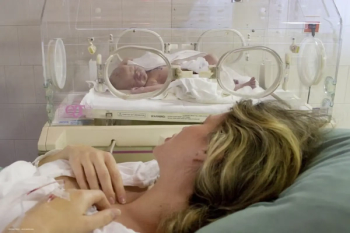
Combined treatment for BRVO reduces re-injection need
Patients who have macular oedema secondary to branch retinal vein occlusion (BRVO) see improved anatomic and functional outcomes with combined intravitreal bevacizumab (IVB) and intravitreal triamcinolone acetate (IVT) therapy when it is delivered early in the disease process, according to the findings of recently published research.
Patients who have macular oedema secondary to branch retinal vein occlusion (BRVO) see improved anatomic and functional outcomes with combined intravitreal bevacizumab (IVB) and intravitreal triamcinolone acetate (IVT) therapy when it is delivered early in the disease process, according to the findings of research published in the
"An important benefit from the presented treatment protocol is the decreased need for multiple re-injections when compared to other studies describing the standard of care," write the Galveston, Texas, researchers.
In their study, the investigators retrospectively analysed 20 eyes that had been injected with 1.25 mg IVB and 2 mg IVT within 8 weeks of onset of clinically identified BRVO. No patient had concomitant ocular pathology, and all underwent 6 months of follow-up. The researchers used spectral-domain optical coherence tomography (OCT; Spectralis, Heidelberg Engineering) to examine eyes for LogMAR visual acuity (VA) and central macular thickness (CMT) preoperatively and 1, 3 and 6 months postoperatively.
The patients had a mean age of 61.3 years and a mean BRVO diagnosis time of 3 weeks at presentation. Their VA improved from logMAR 1.08 preoperatively to mean logMAR VA of 0.55 ± 0.17 at 1 month, 0.56 ± 0.21 at 3 months, and 0.38 ± 0.1 at 6 months. Their mean CMT improved from 482 ± 107 μm preoperatively to 319 ± 53 μm at 1 month, 344 ± 89 μm at 3 months, and 241 ± 29 μm at 6 months. Their mean IOP preoperatively was 16.5 mmHg, 21 mmHg at 1 month, and 15 mmHg at 6 months. At 3 months, 6 out of 20 patients had re-injections of IVB and IVT.
"The prolonged anti-vascular endothelial growth factor effect of combined IVB and IVT may be helpful in reducing the number of intravitreal injections required to achieve prompt and sustained decrease in macular oedema. It may also help to reduce the risk of elevated IOP associated with corticosteroids if fewer injections are administered," the researchers write. "IVB and IVT may be a particularly good option when argon laser photocoagulation cannot be administered. IVB and IVT may have a synergistic effect on minimizing the sequelae of vision threatening macular oedema secondary to BRVO, but further randomized clinical trials with control groups are needed."
To read the study, visit the journal's
Newsletter
Get the essential updates shaping the future of pharma manufacturing and compliance—subscribe today to Pharmaceutical Technology and never miss a breakthrough.












































